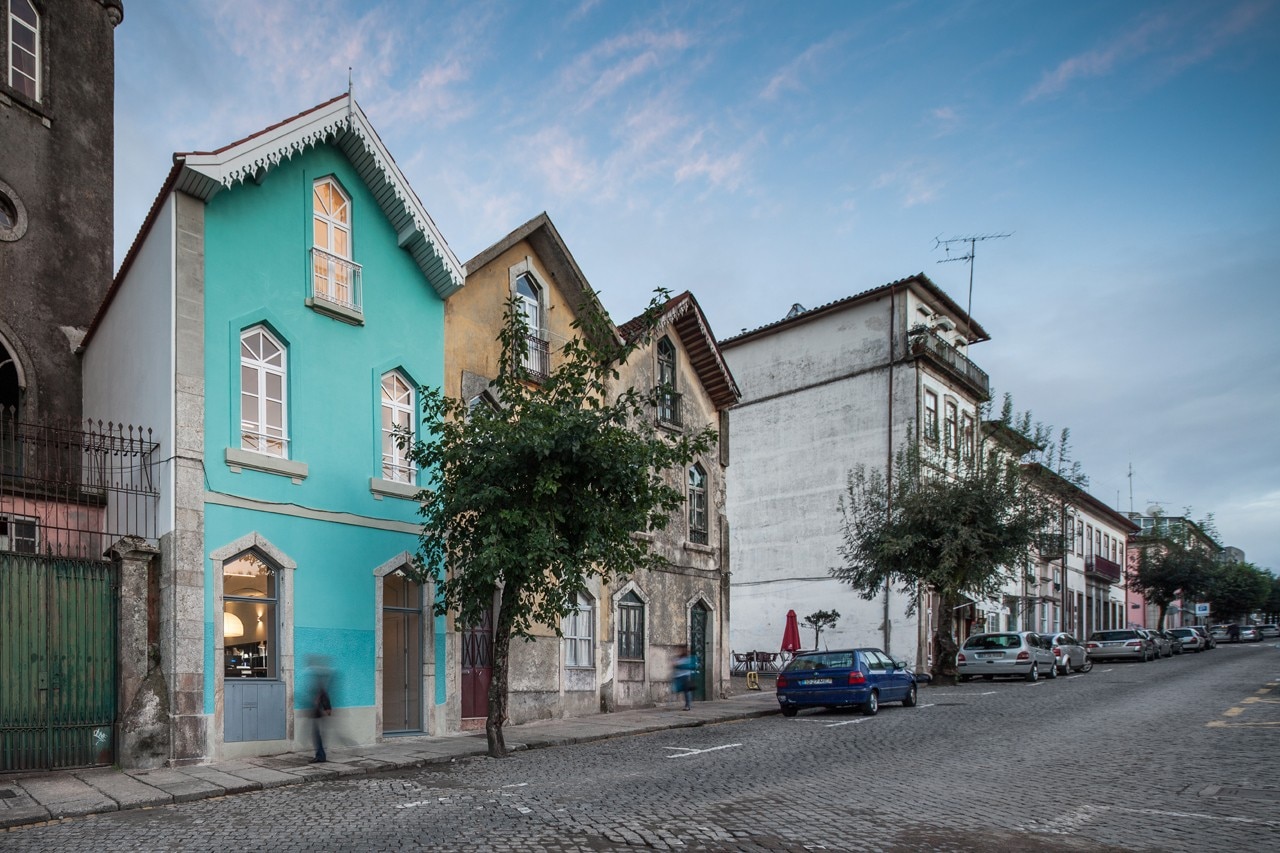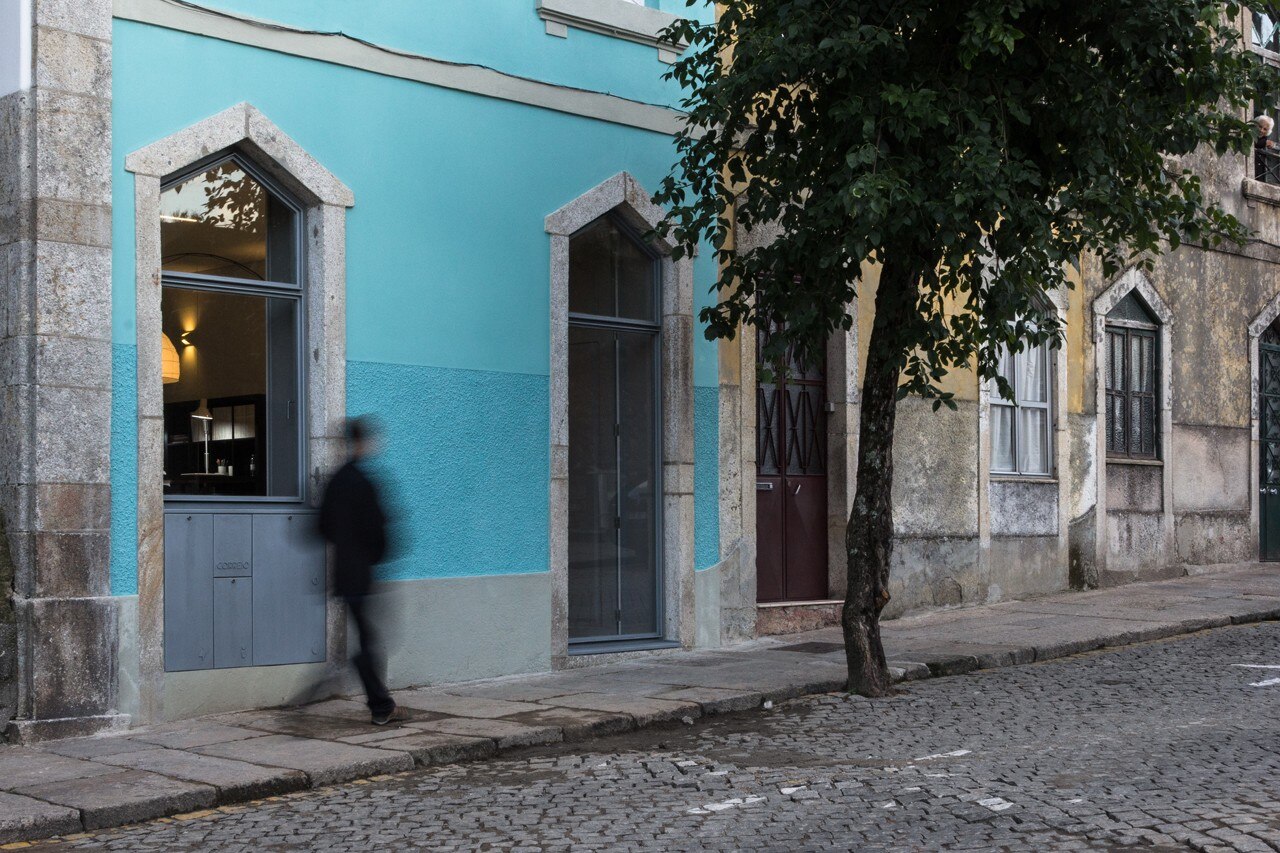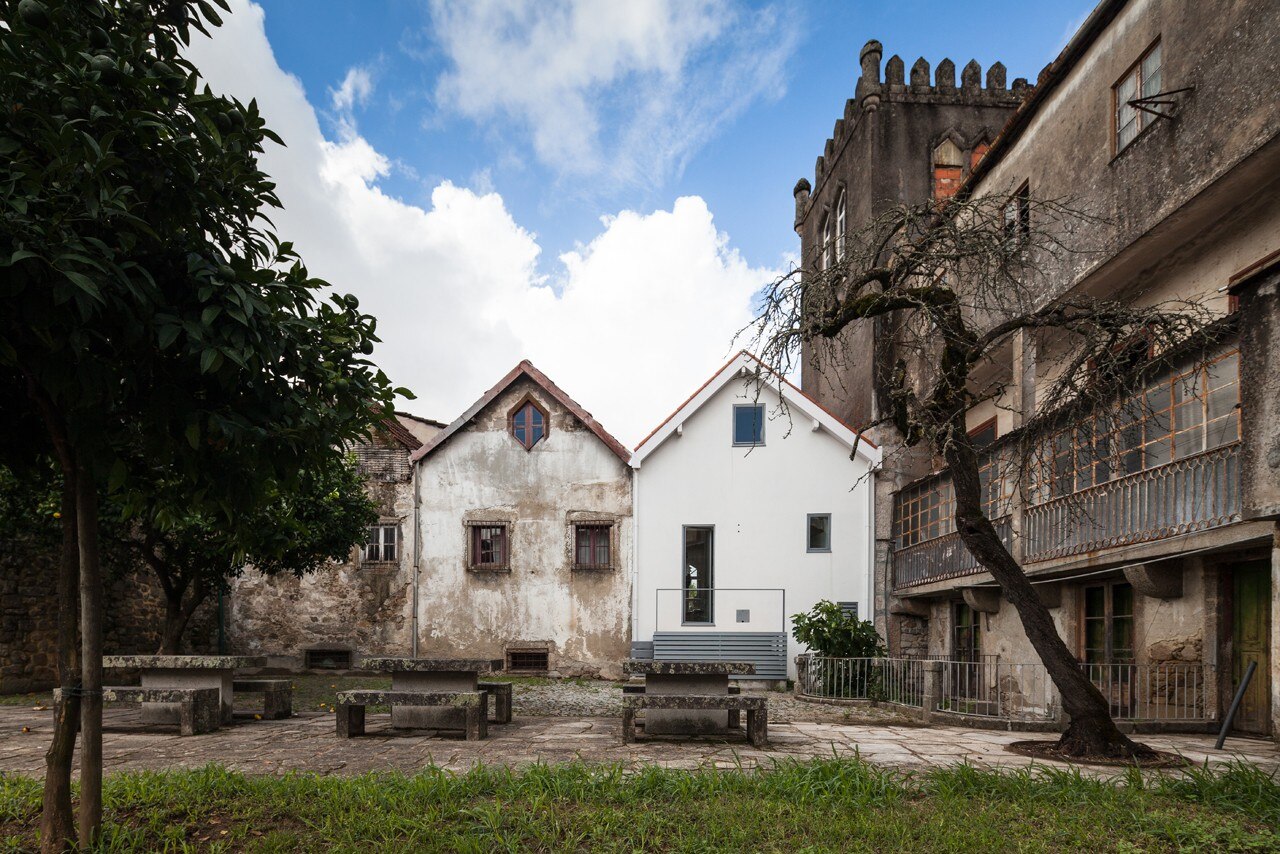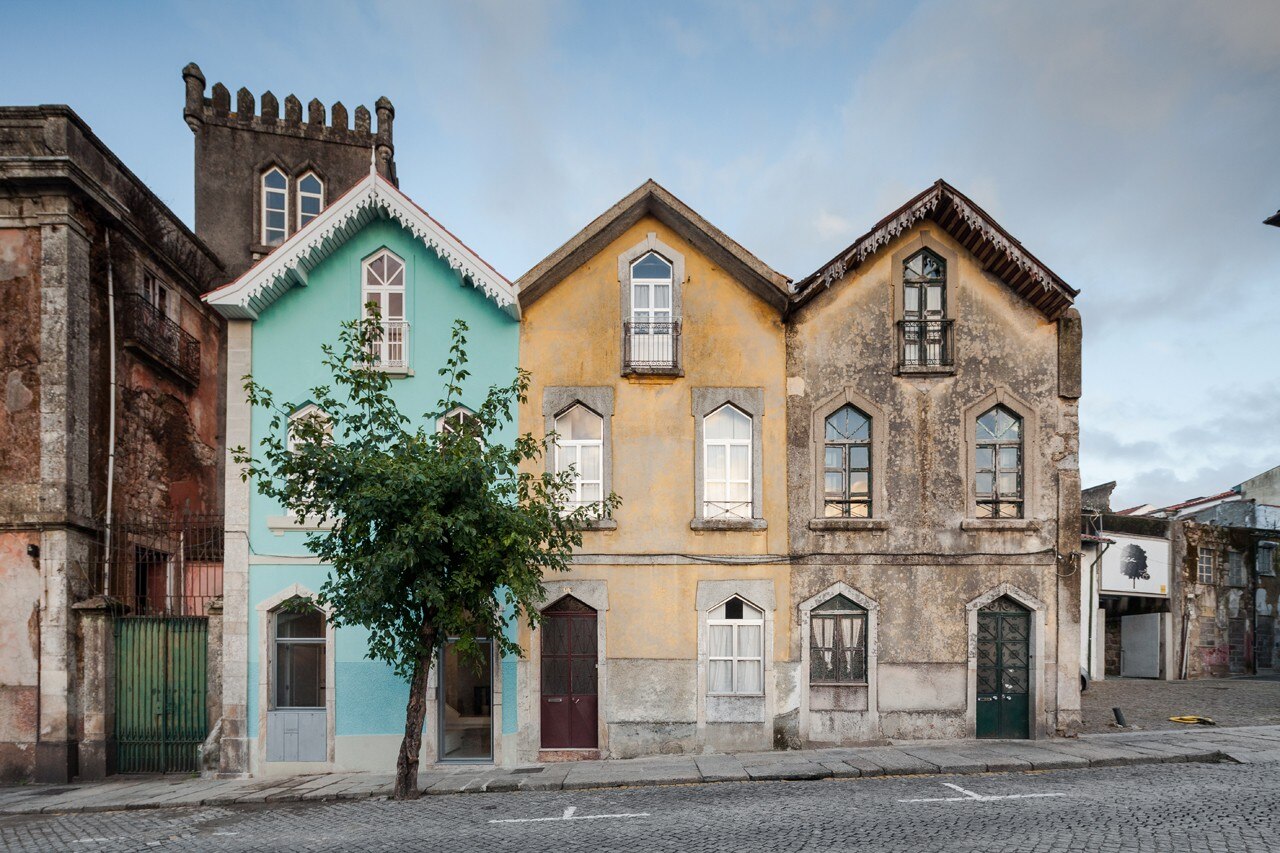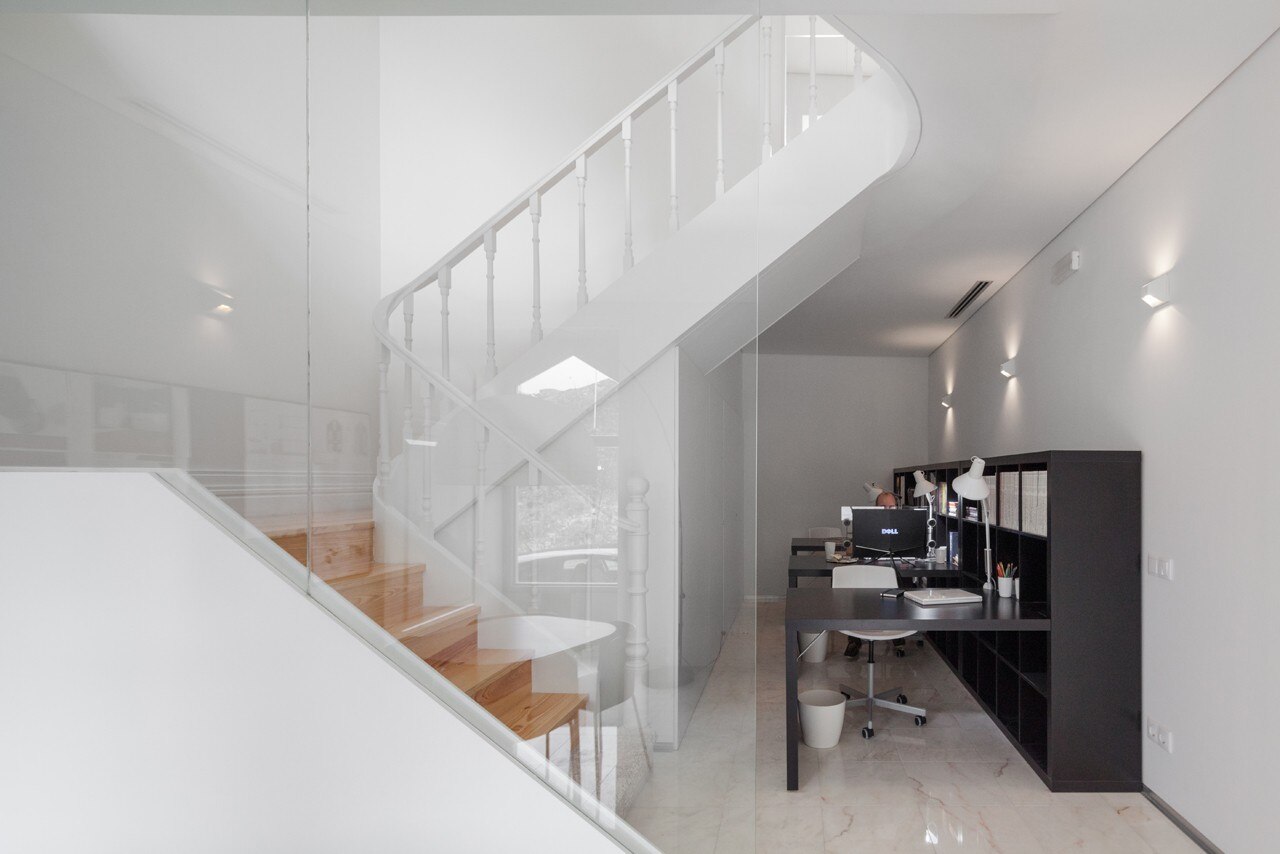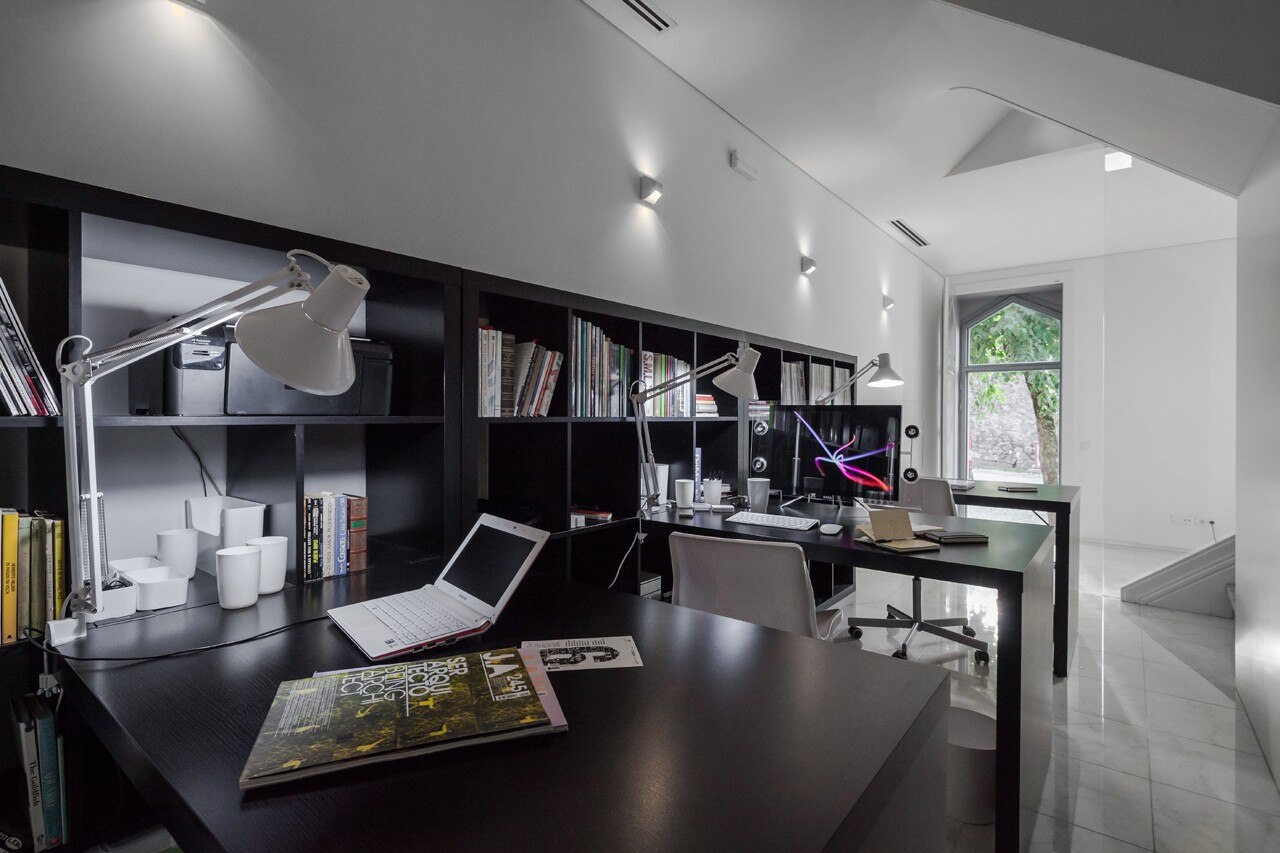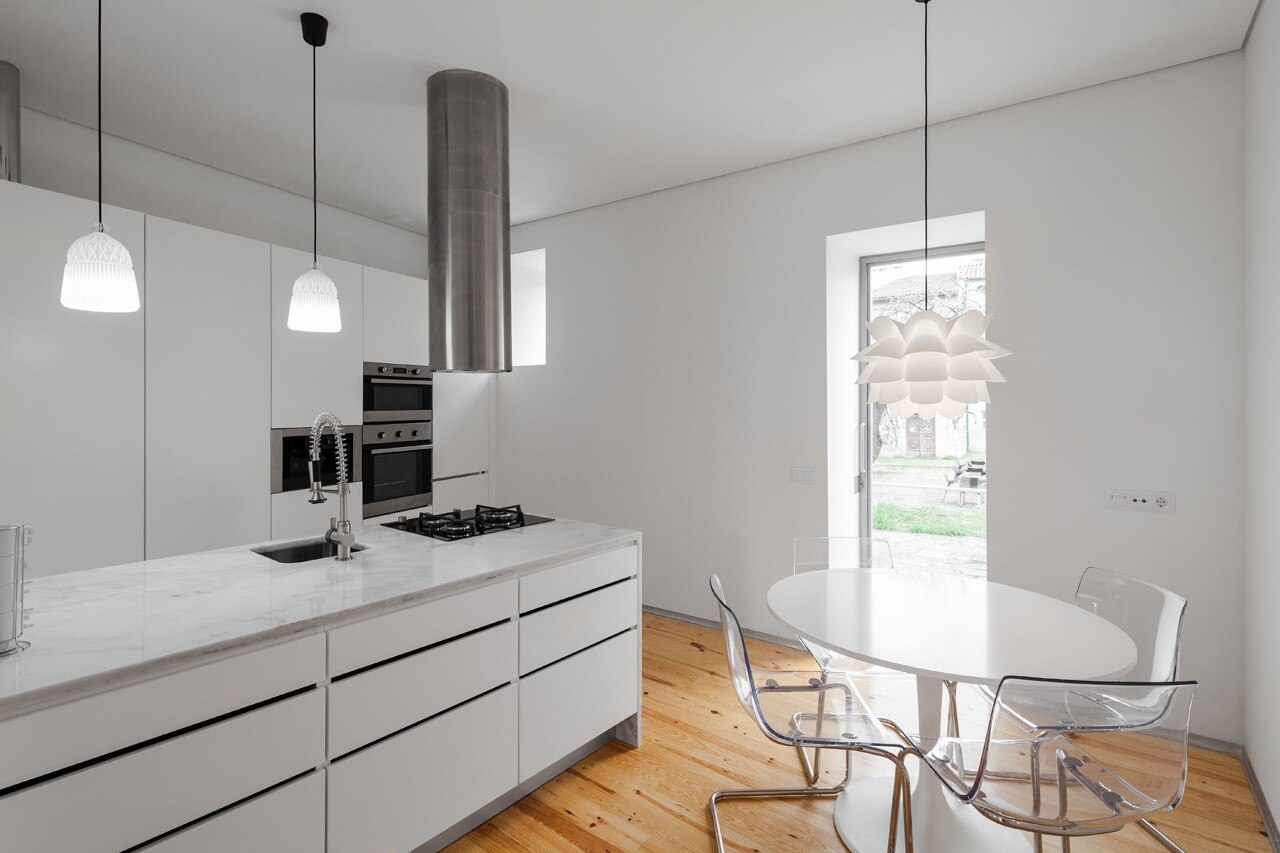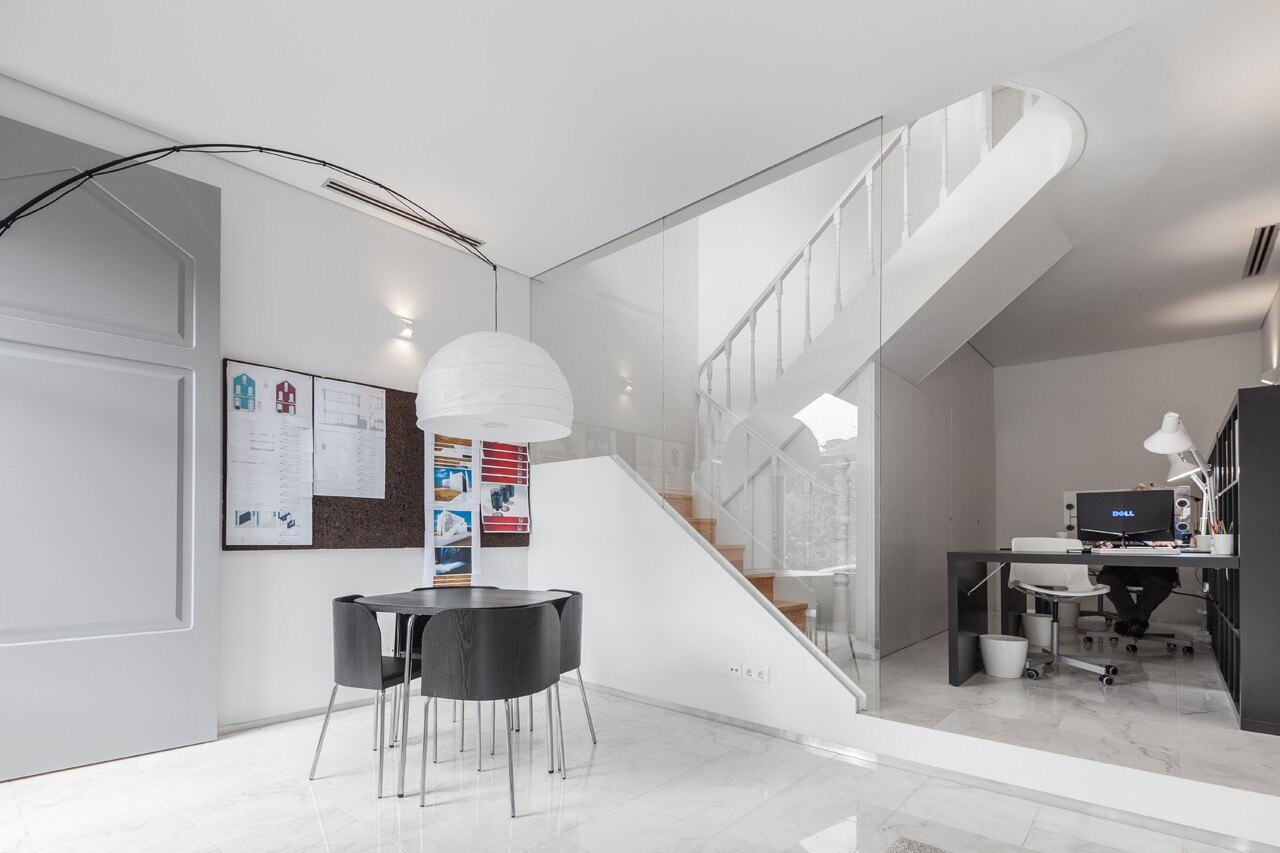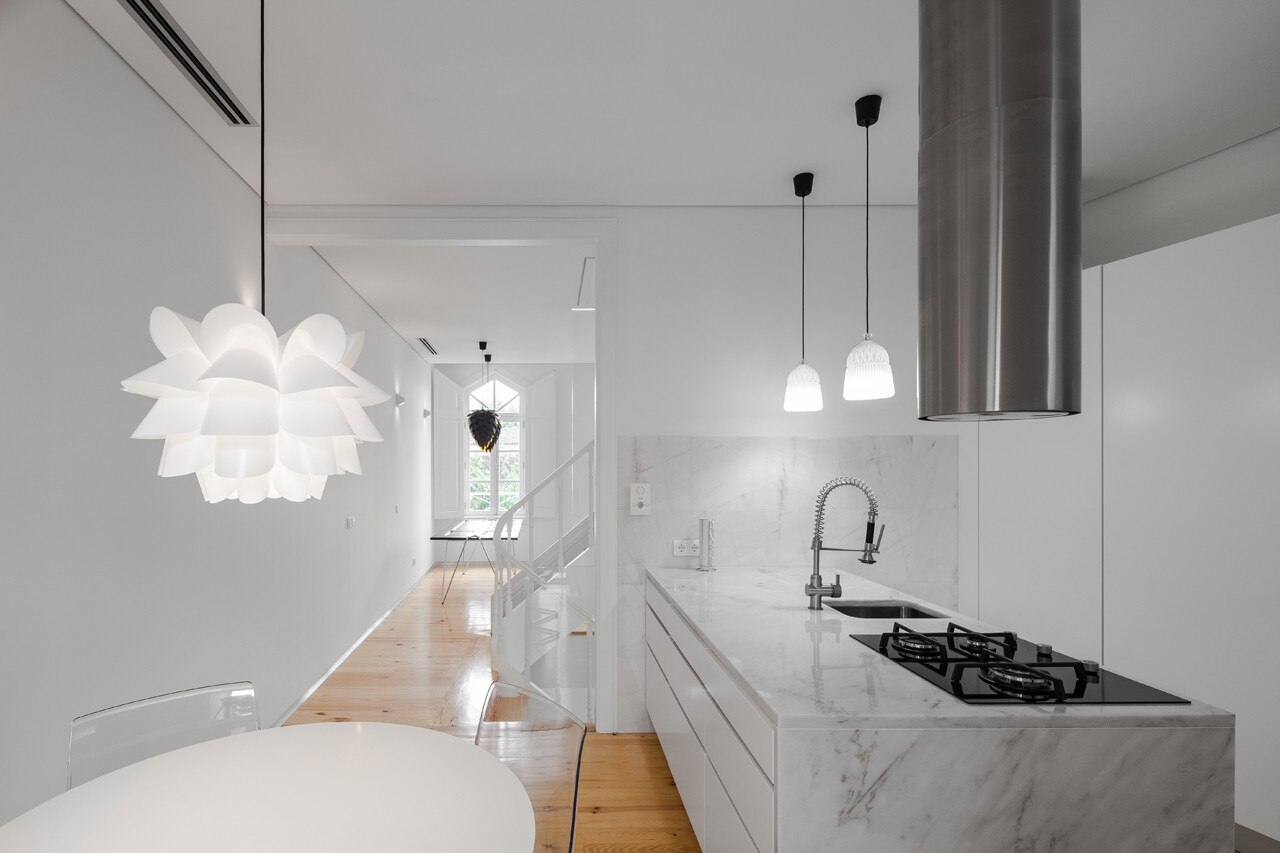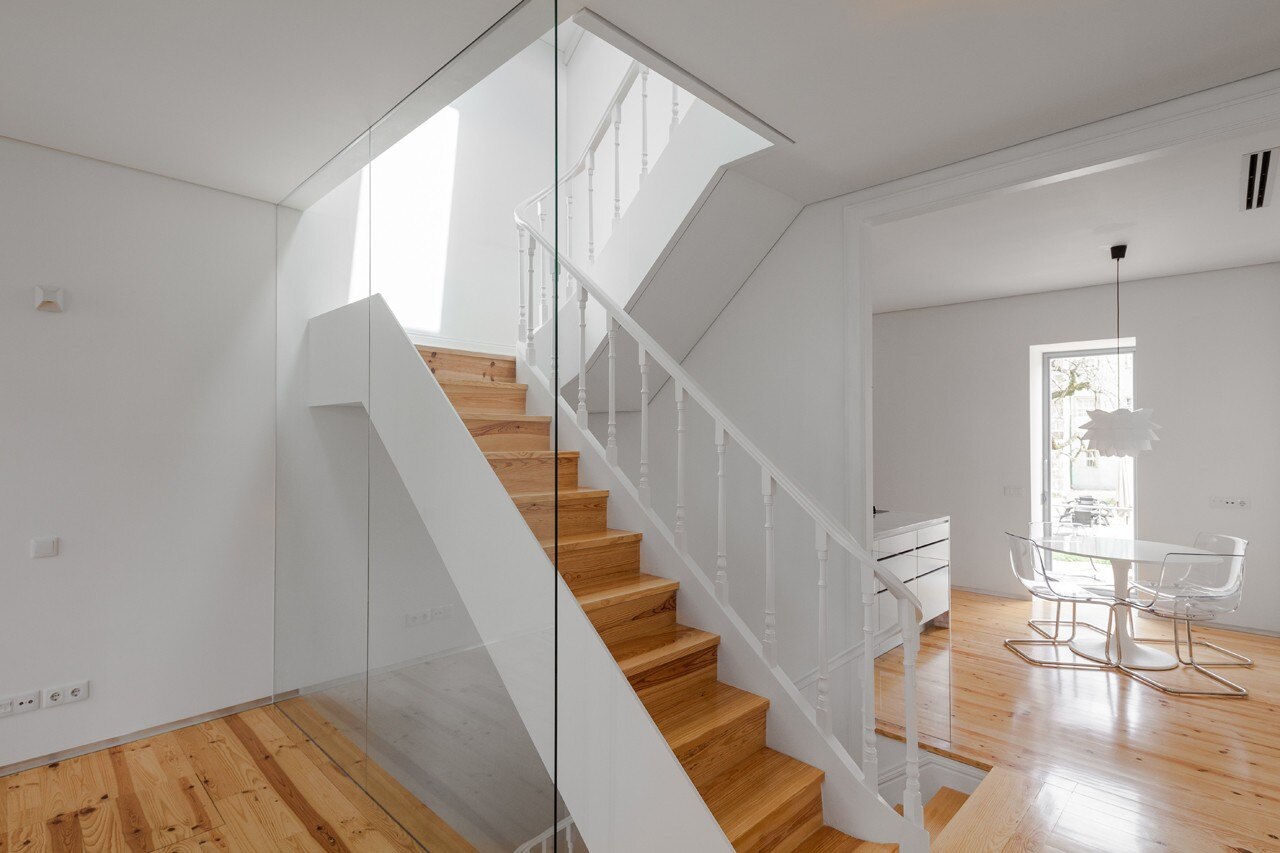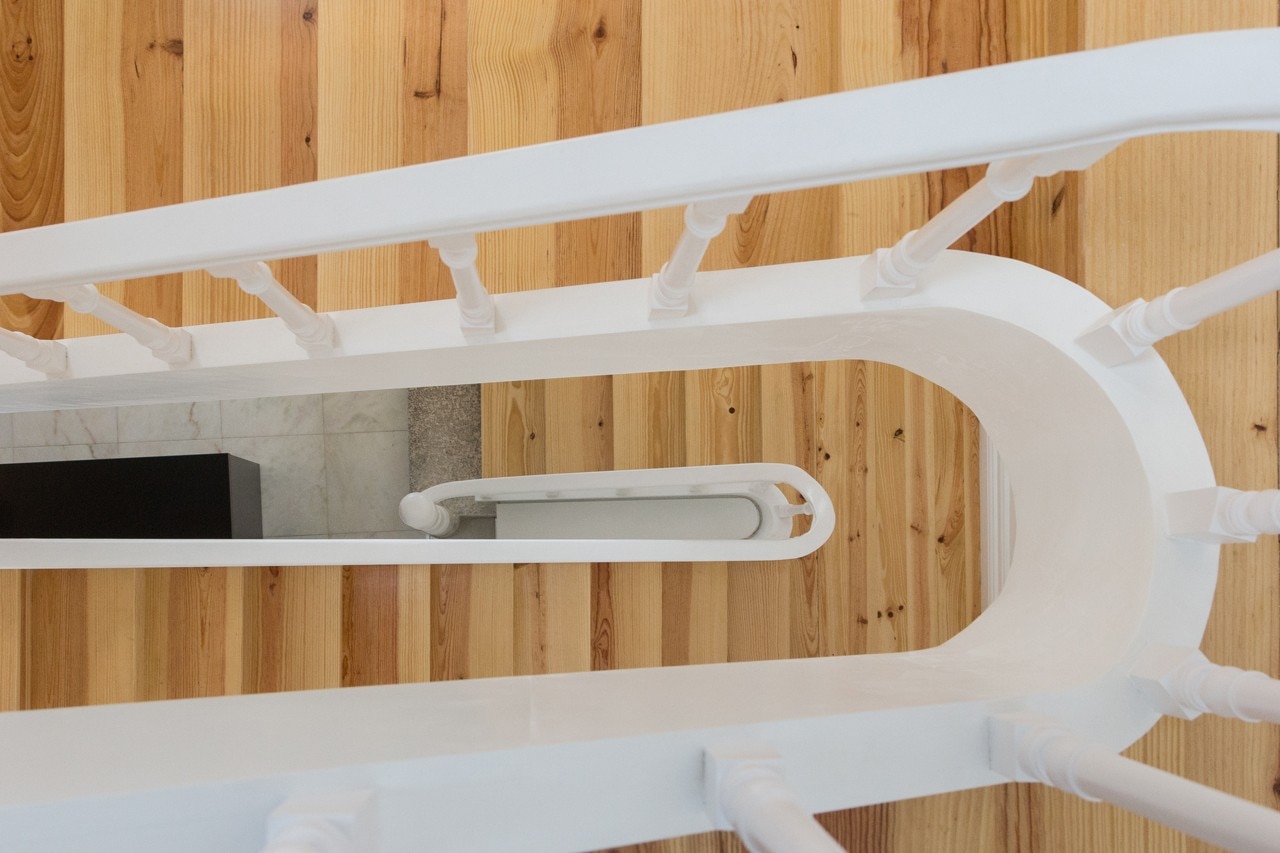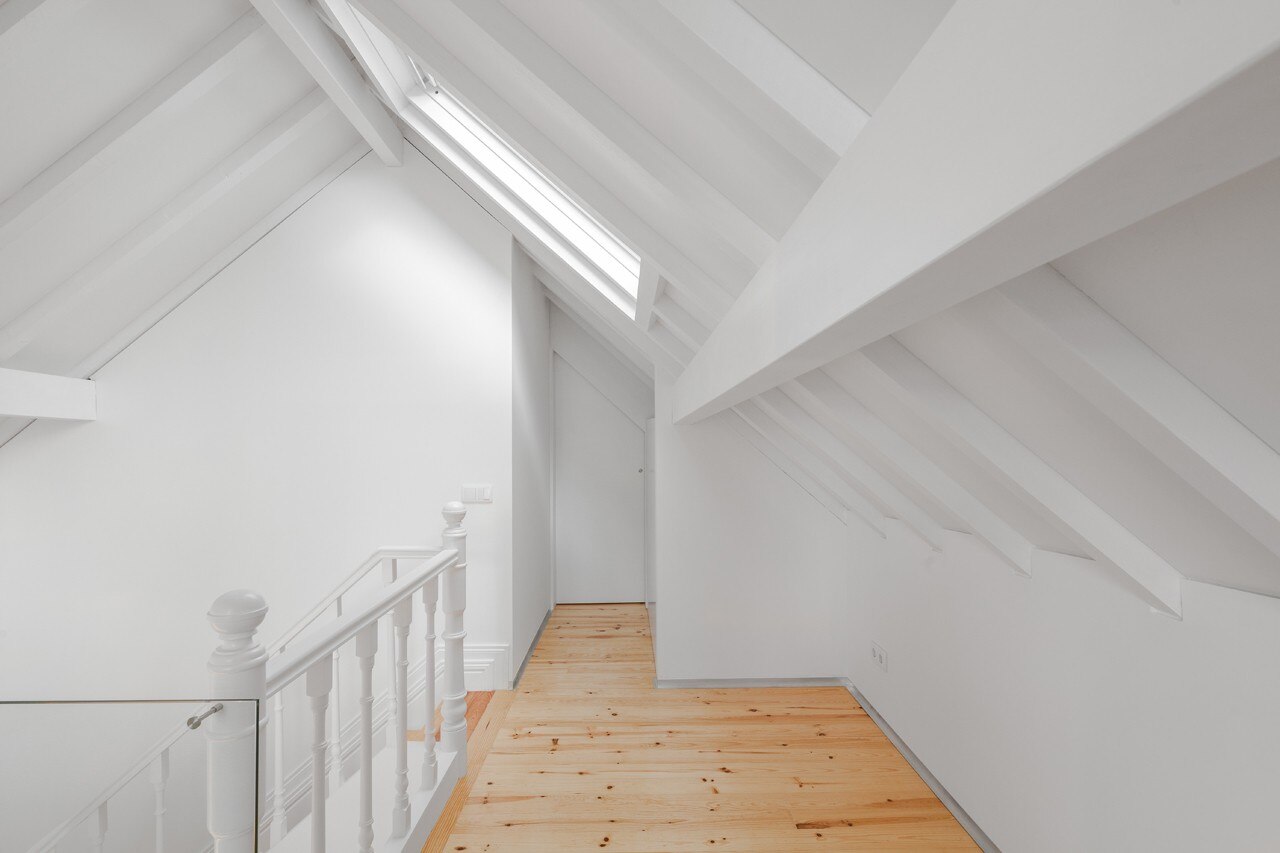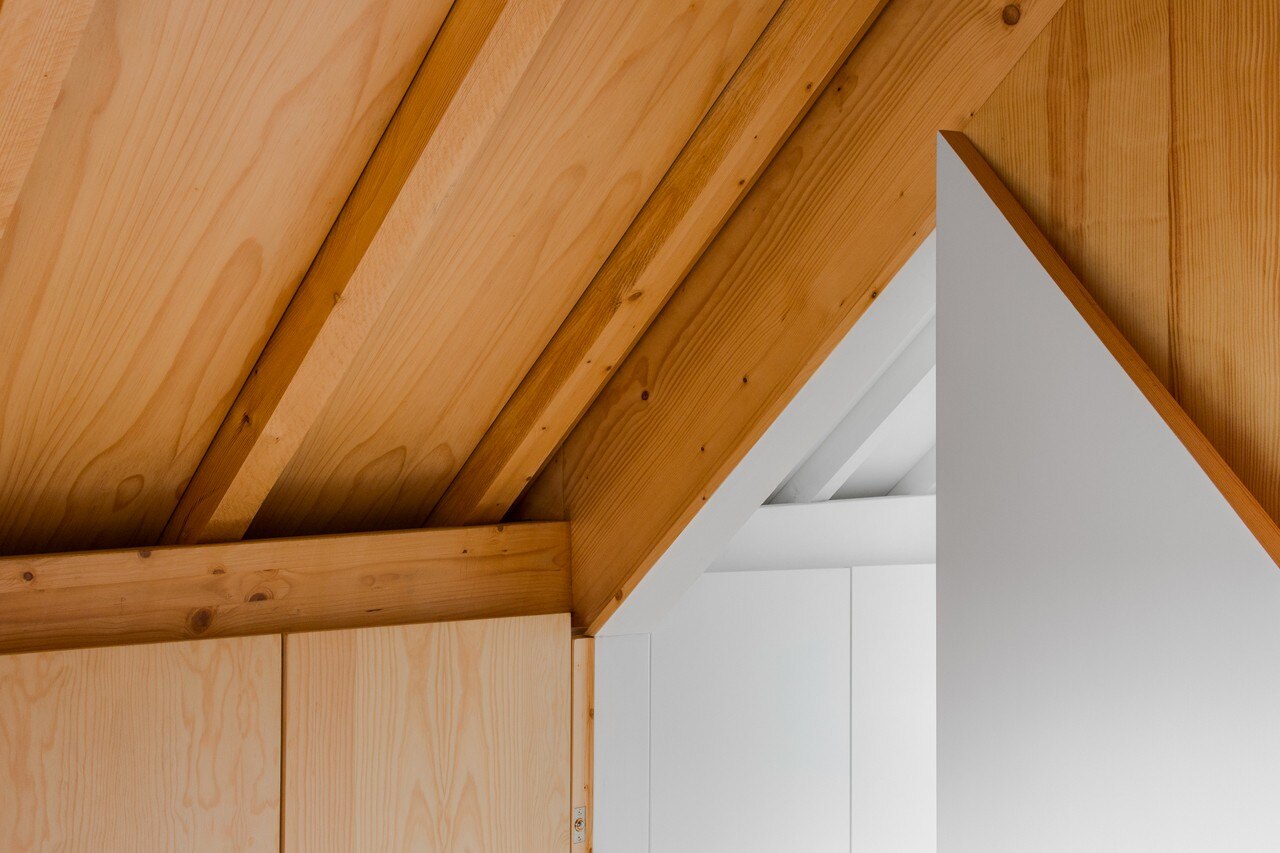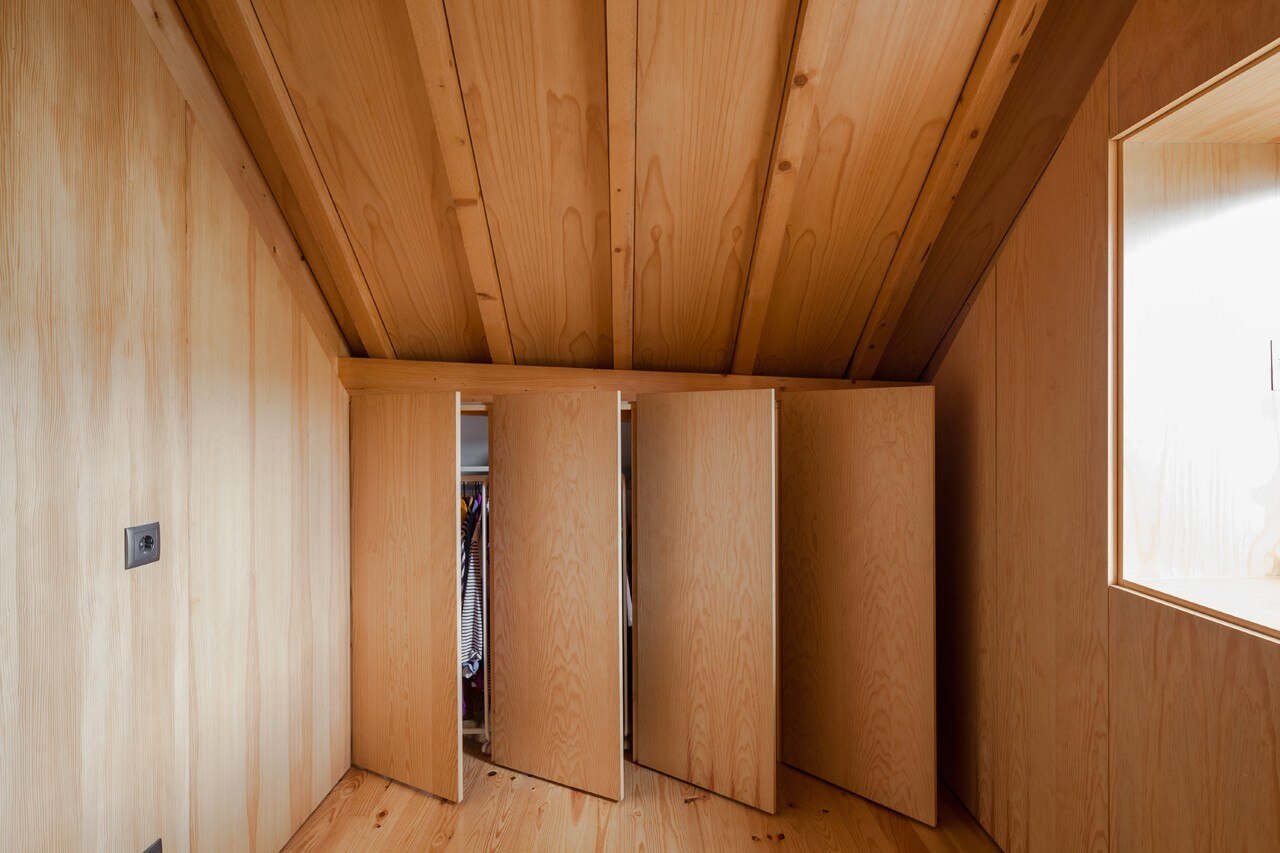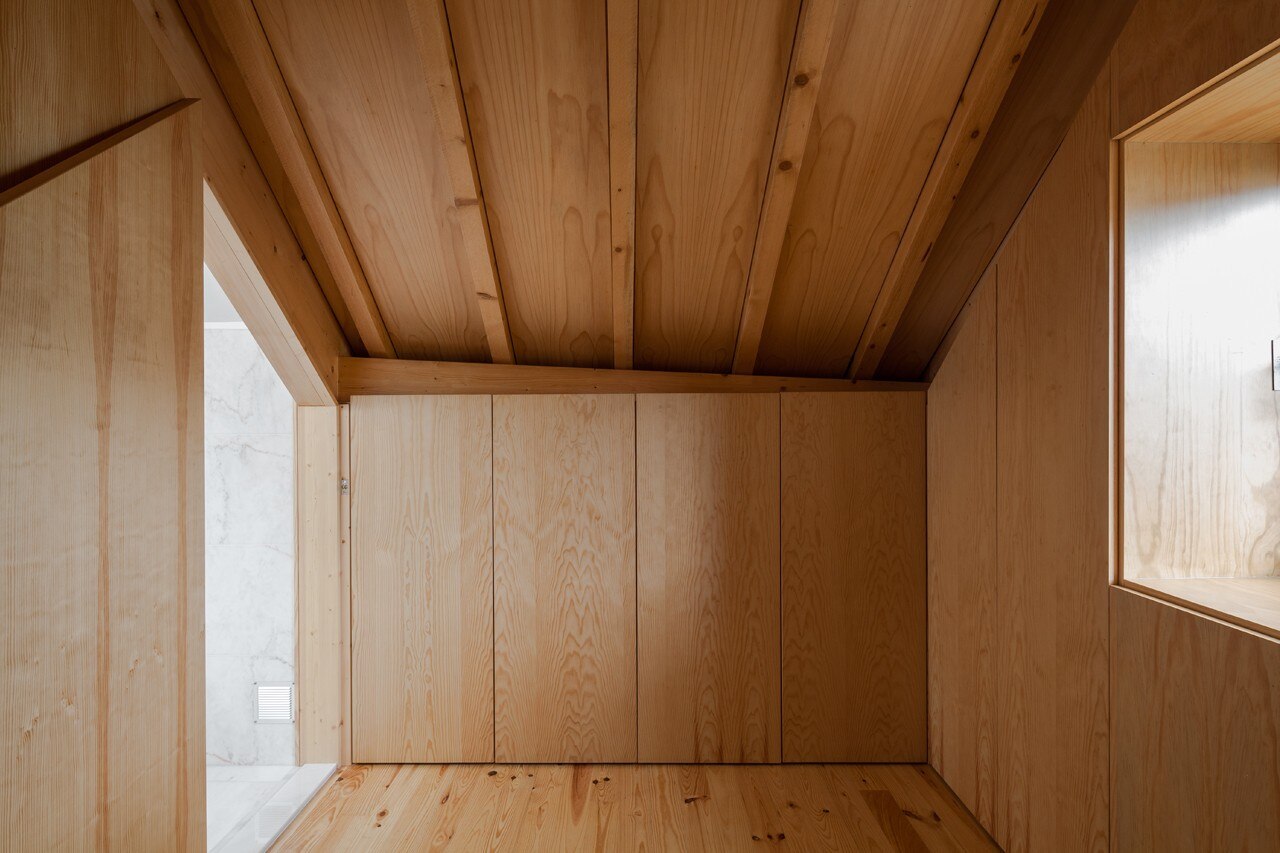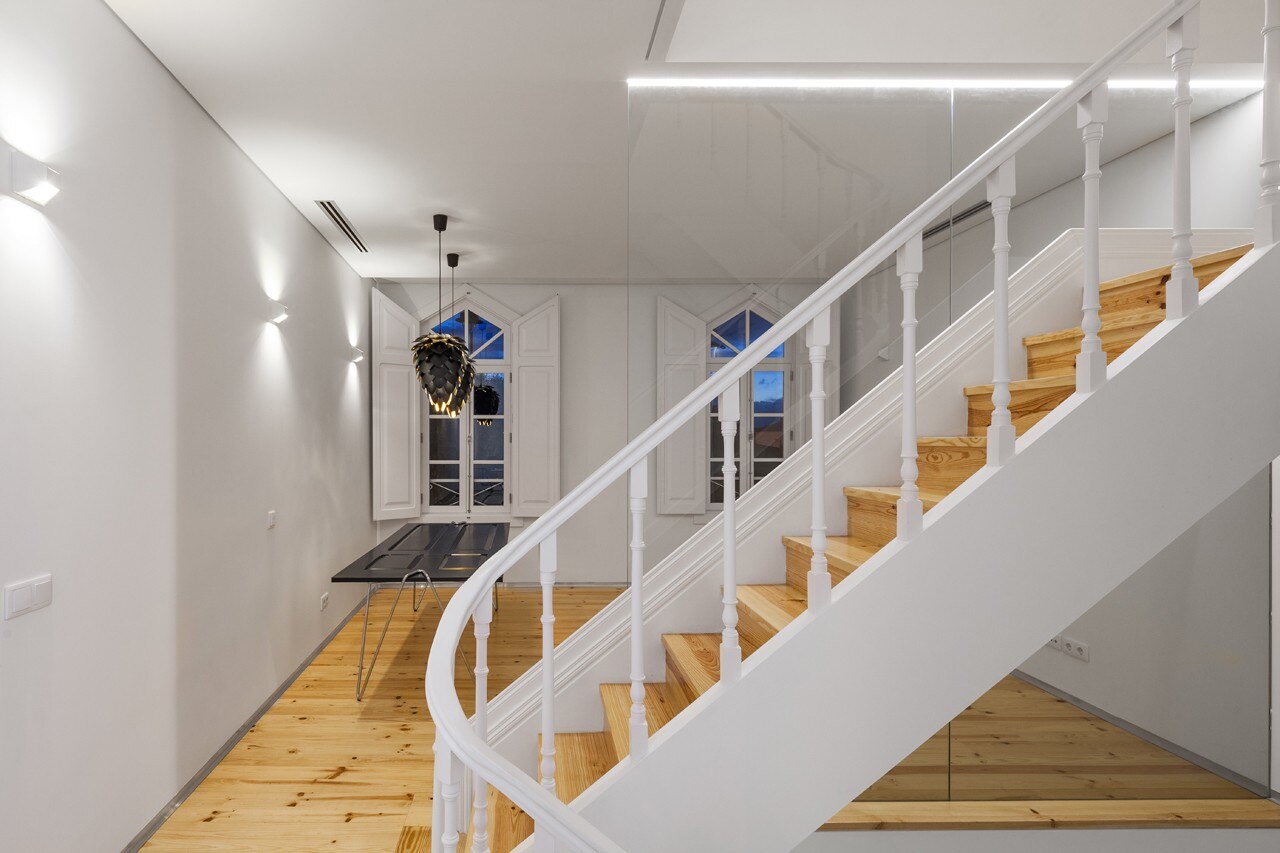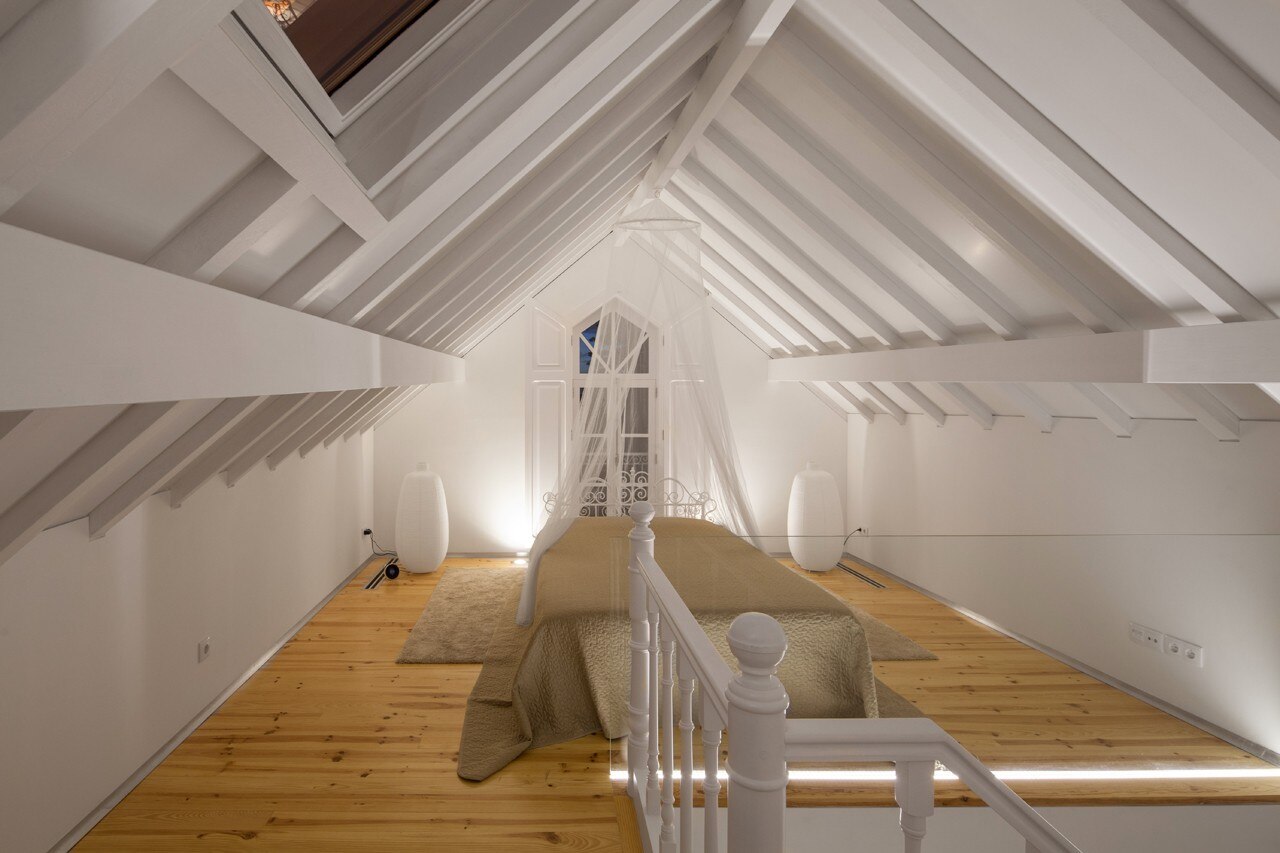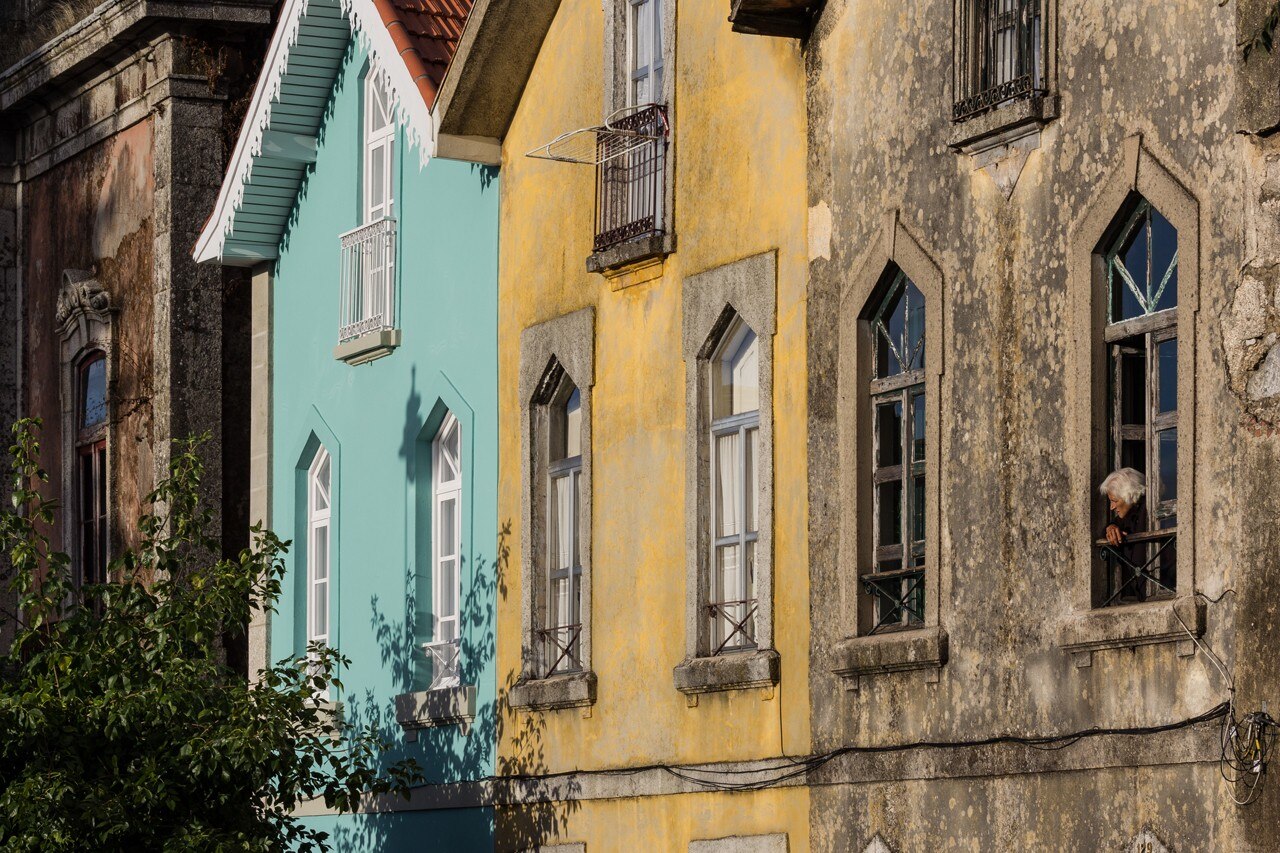
Built according to the devised model of an alpine chalet, so popular in 19th century Brazil (with narrow proportions, tall windows, pitched roofs and decorated eaves), the Three Cusps Chalet was that one building.
Due to the confluence of such particular circumstances it’s quite likely the only example of a common, spartan, 19th century building of Brazilian ancestry in Portugal.
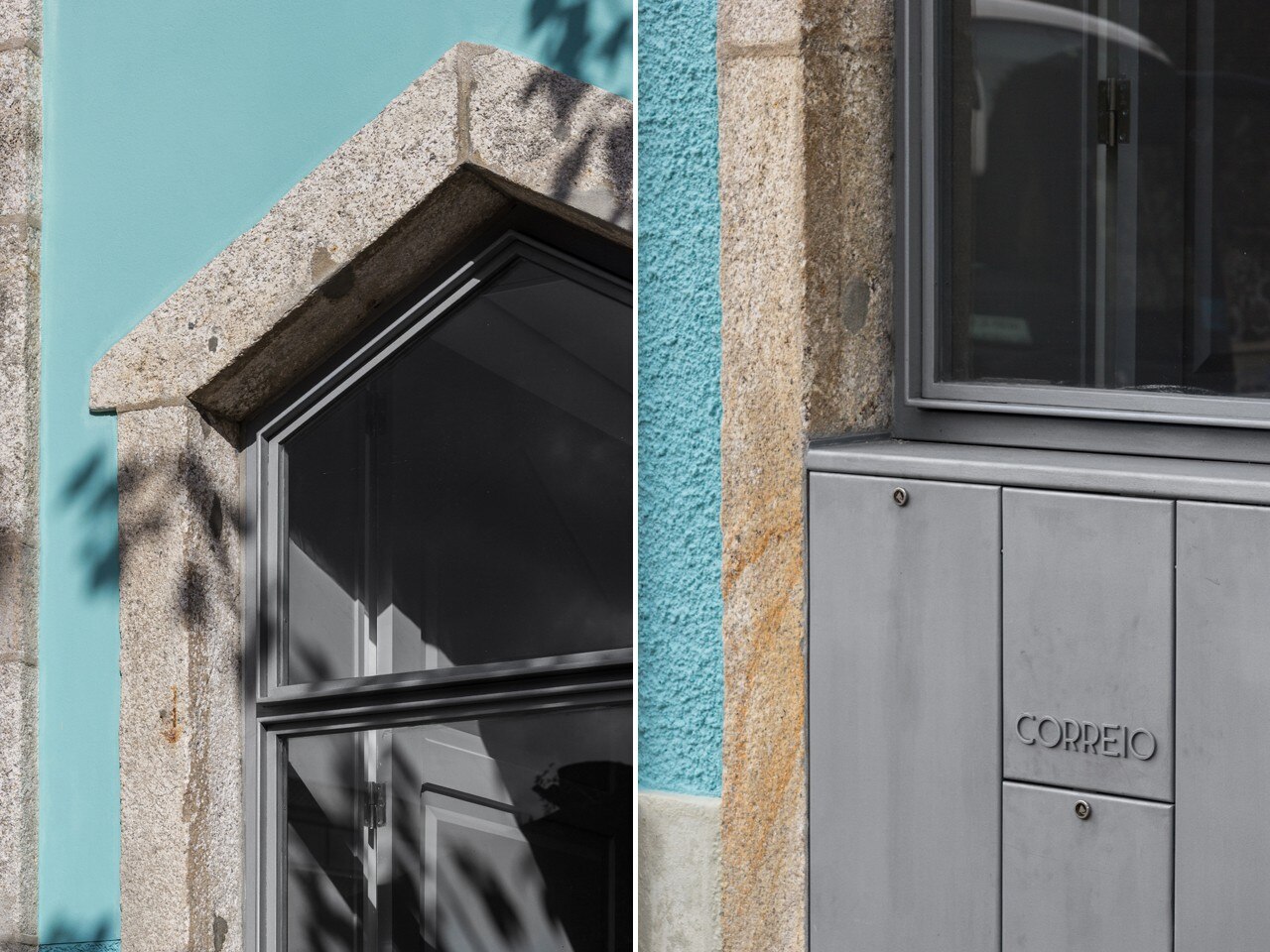
Before the intervention, its plan was organized by the staircase (brightened by a skylight), placed at the center of the house and defining two spaces of equal size, East and West, on each floors. The nature of each floor changes from public to private as we climb from the store at the street level to a living room (West) and kitchen (East) at the first floor, with the sleeping quarters on top.
Materials-wise, all of the stonework and the peripheral supportive walls are built with local yellow granite, while the floors and roof are executed with wooden beams with hardwood flooring.
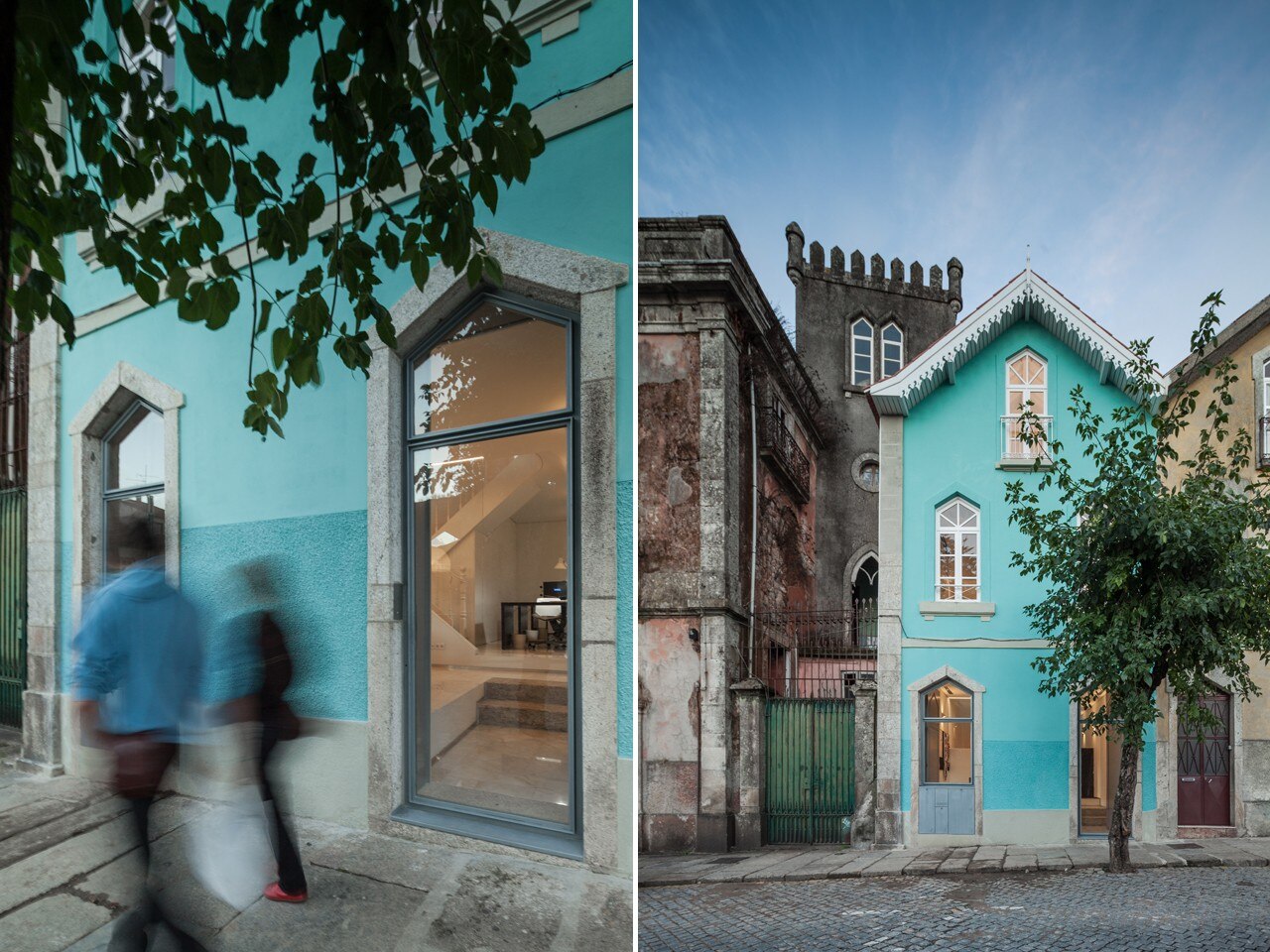
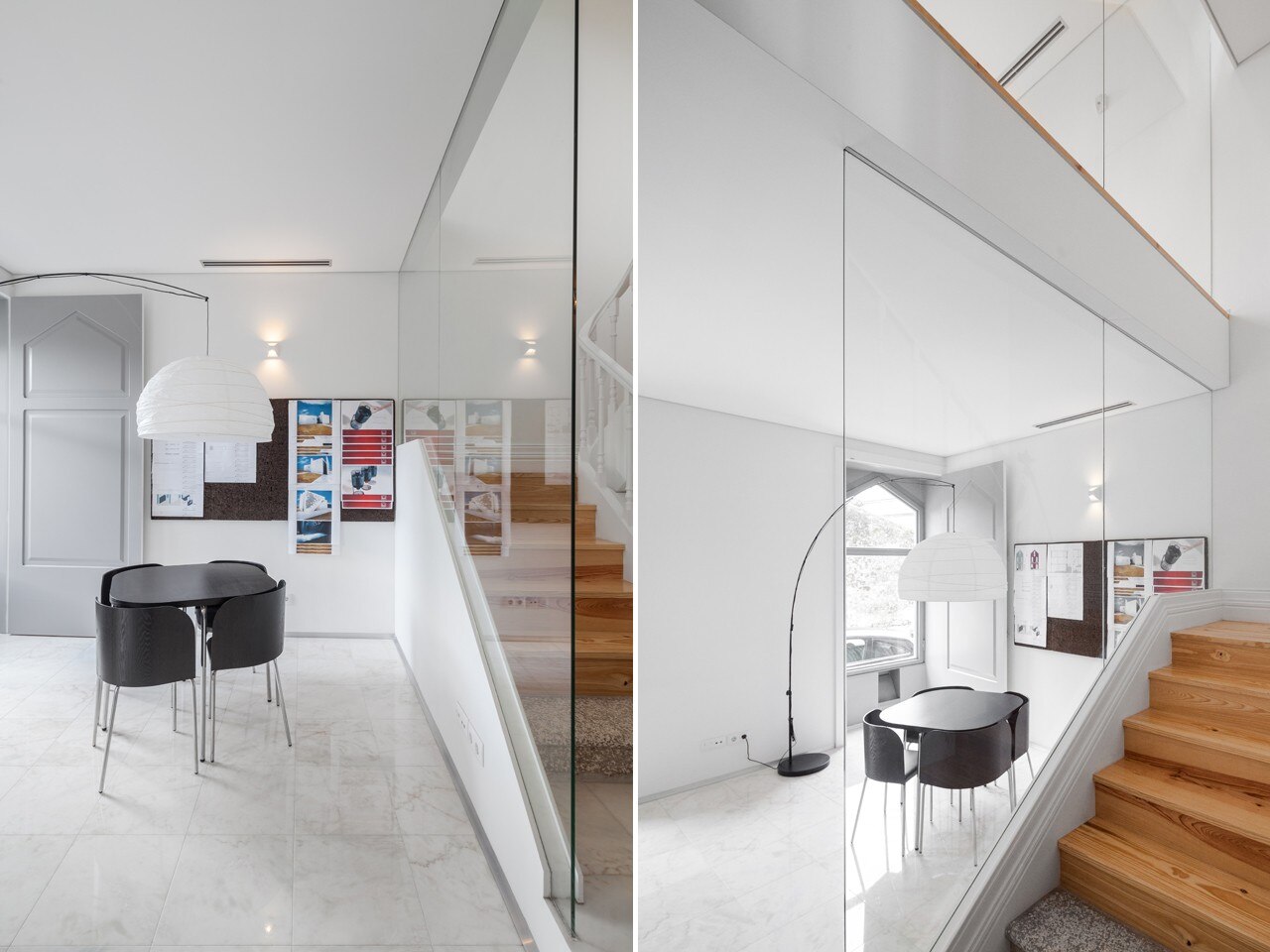
The program asked for the cohabitation of a work studio and a home program. Given the reduced area of the building, the original strategy of hierarchizing spaces by floor was followed. The degree of privacy grows as one climbs the staircase. The stairs also get narrower with each flight of steps, informing the changing nature of the spaces it connects.
A willingness to ensure the utmost transparency throughout the building, allowing light to cross it from front to front and from top to bottom, defined all of the organizational and partitioning strategies resulting in a solution related to a vertical loft.
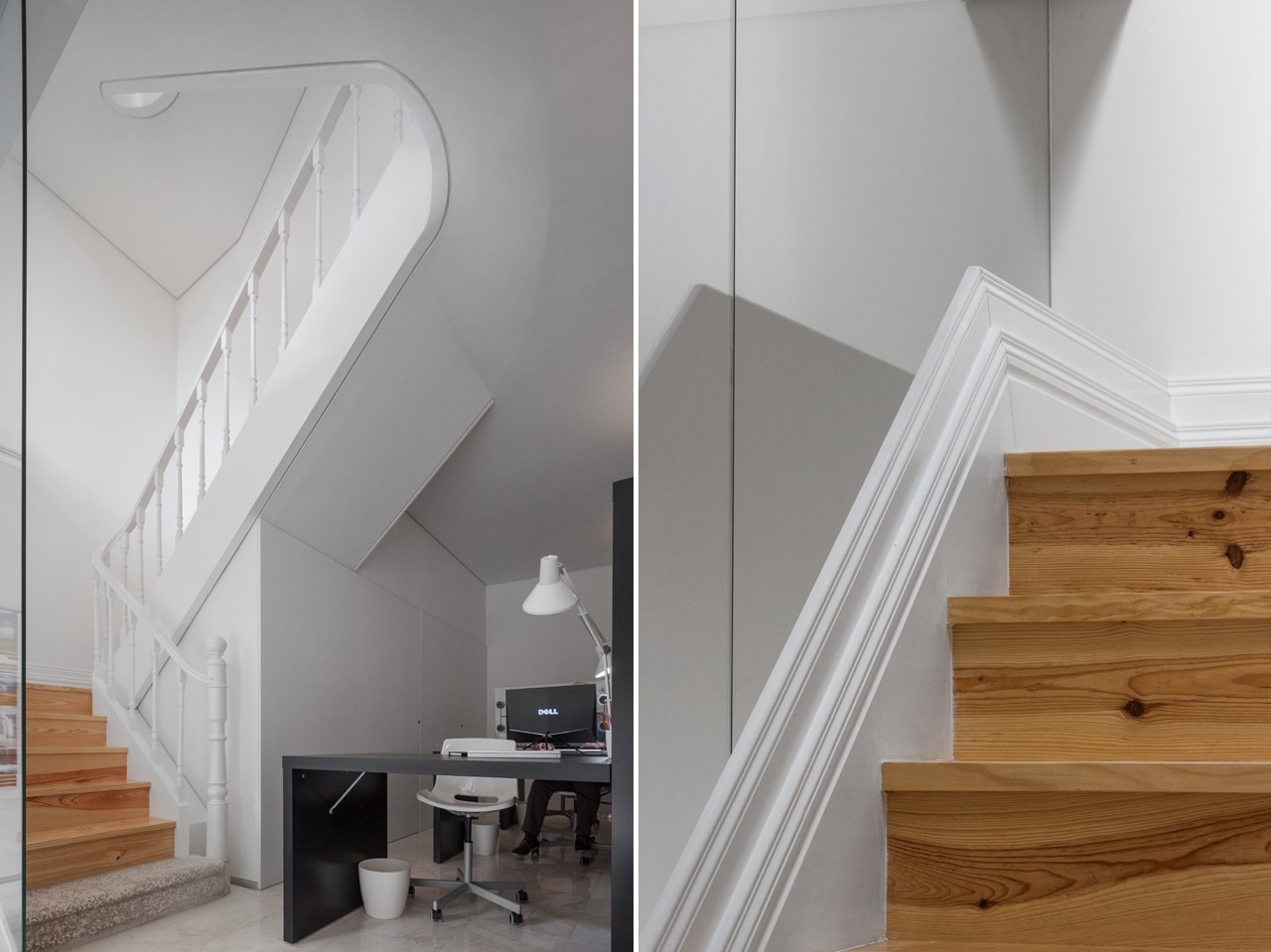
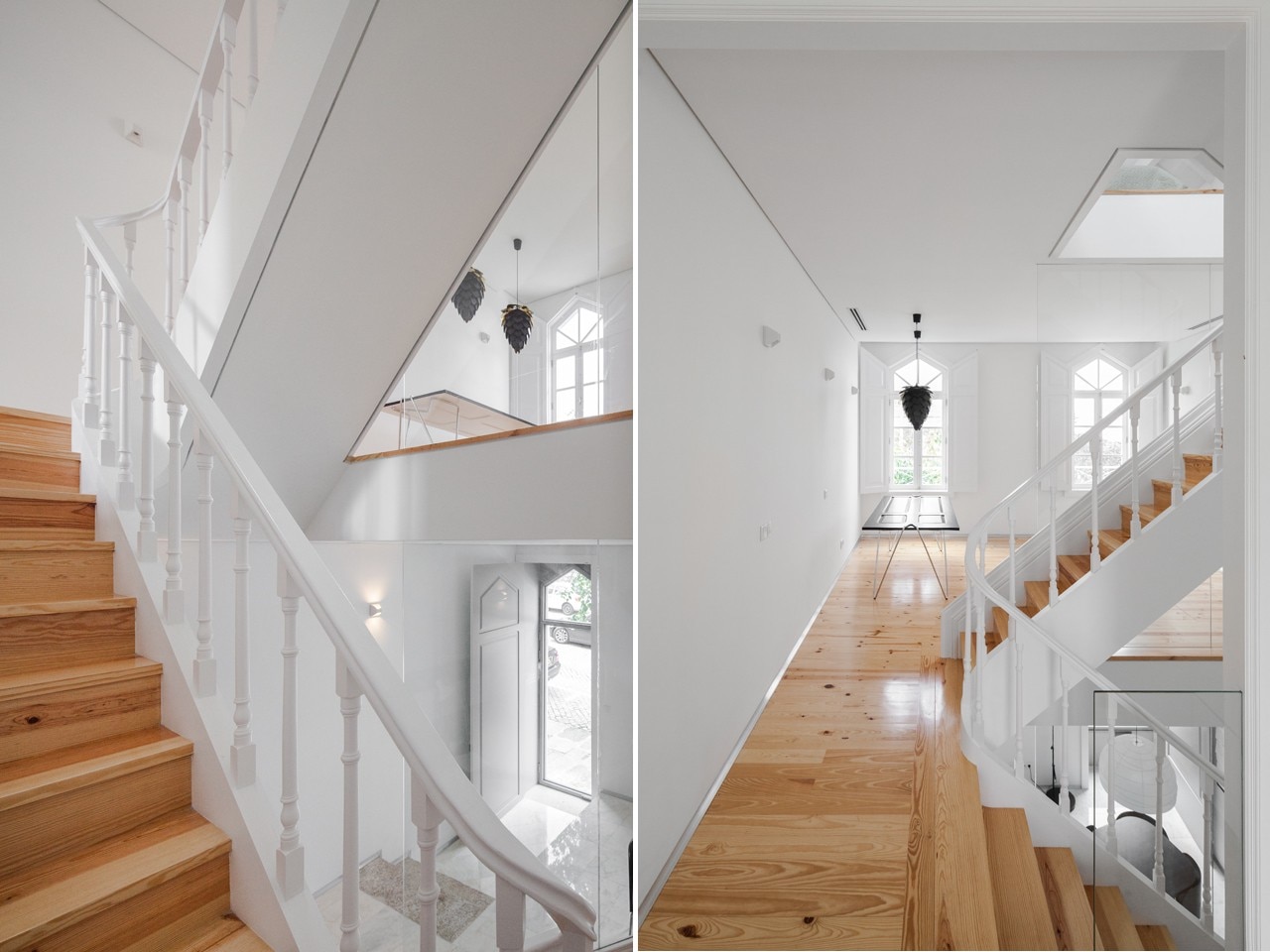
The staircase geometry, previously closed in 3 of its sides, efficiently filters the visual relations between both programs while still allowing for natural light to seep down from the upper levels and illuminate the working studio.
The second floor was kept for the social program of the house. Refusing the natural tendency for compartmentalizing, the staircase was allowed to define the perimeters of the kitchen and living room, creating an open floor with natural light all day long. Light enters from the kitchen in the morning, from the staircase's skylight and from the living room in the afternoon.
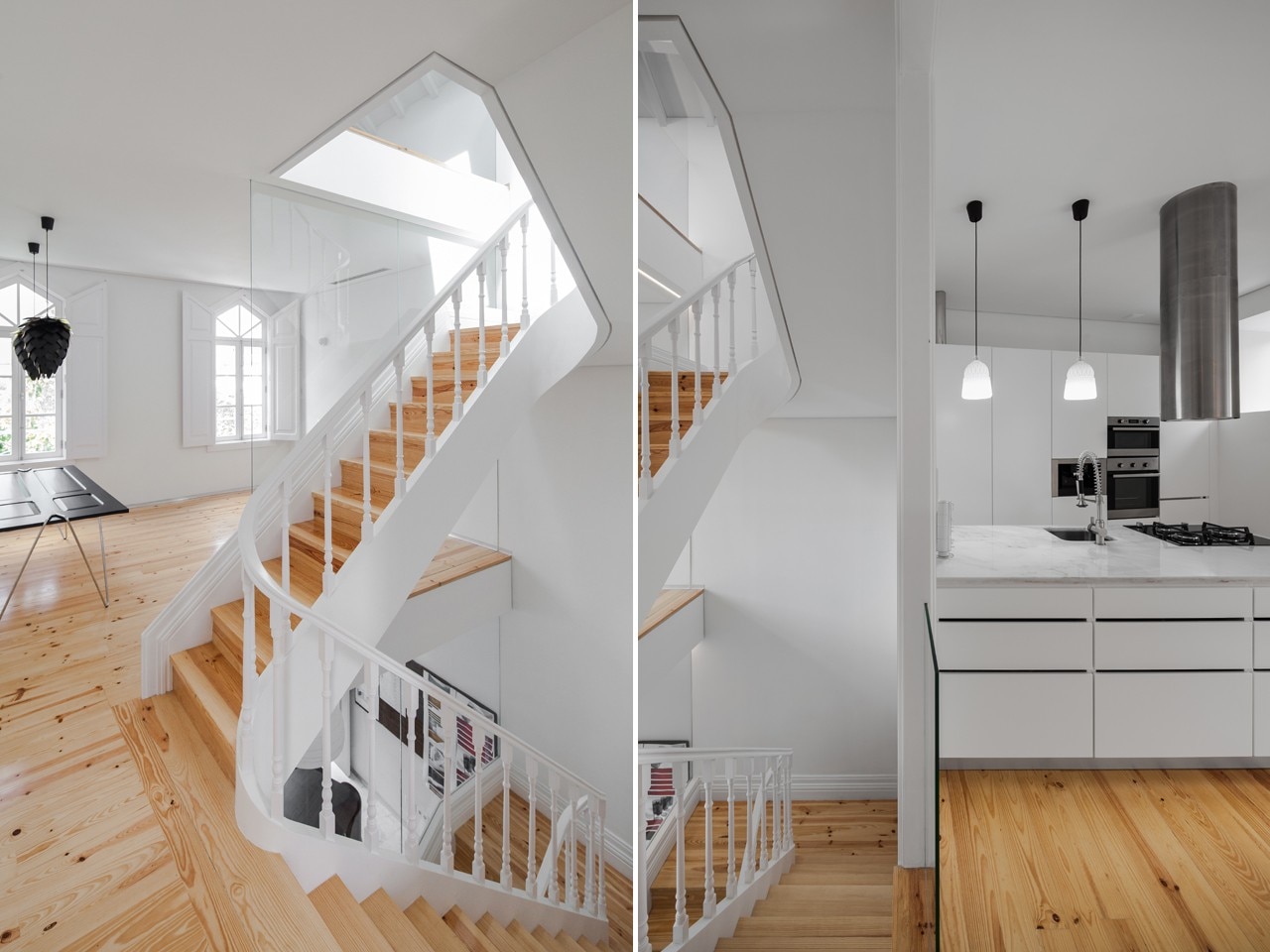
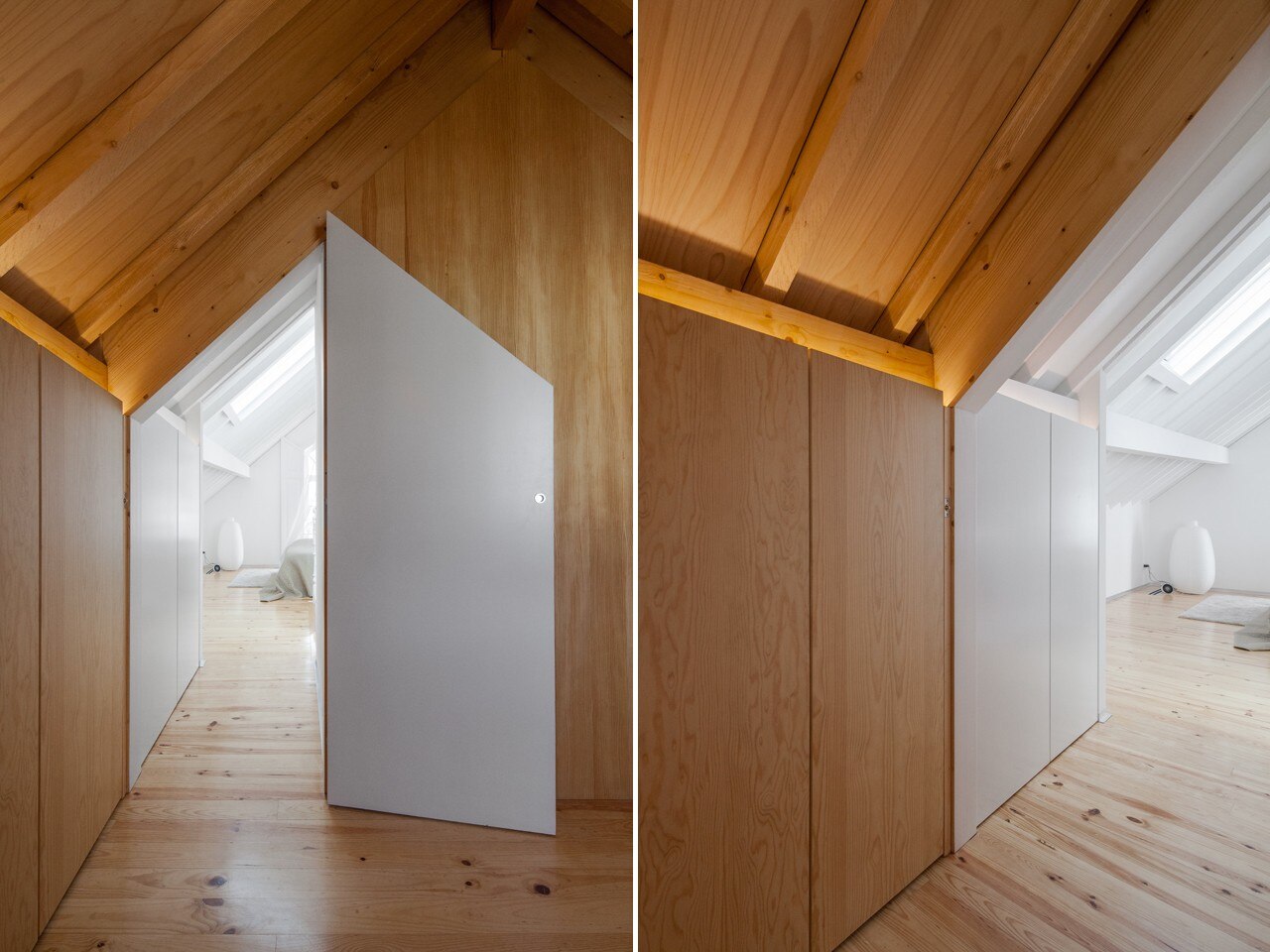
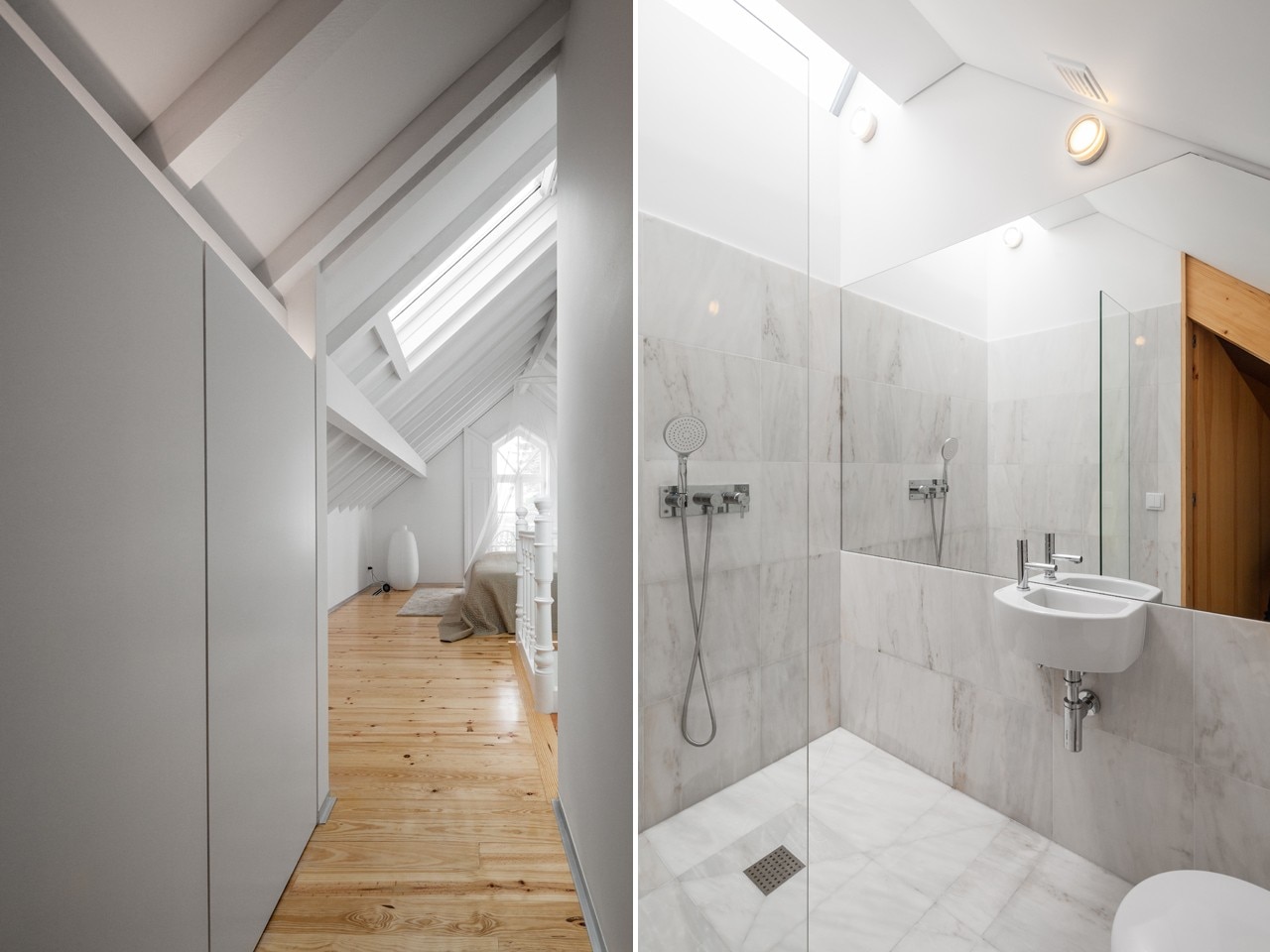
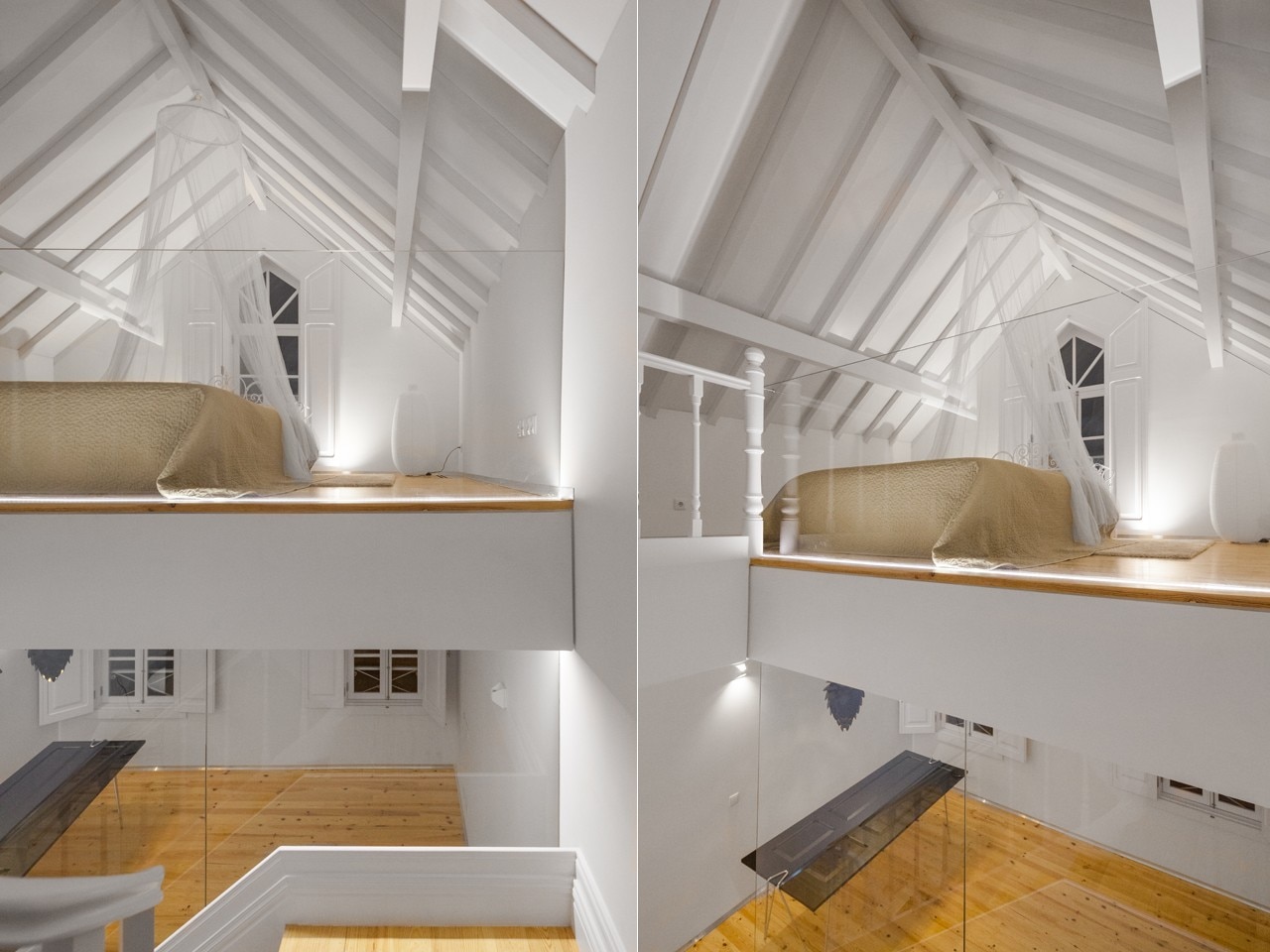
All of the original wood window frames of the main façade were recovered, the roof was remade with the original Marseille tiles over a pine structure and the decorated eave restored to its original glory.
The hardwood floors were remade with southern yellow pine over the original structure and all the surfaces that required waterproofing covered with Portuguese Estremoz marble.
Ground floor window frames were remade in iron, as per the original, but redesigned in order to maximize natural illumination (as on the east façade).
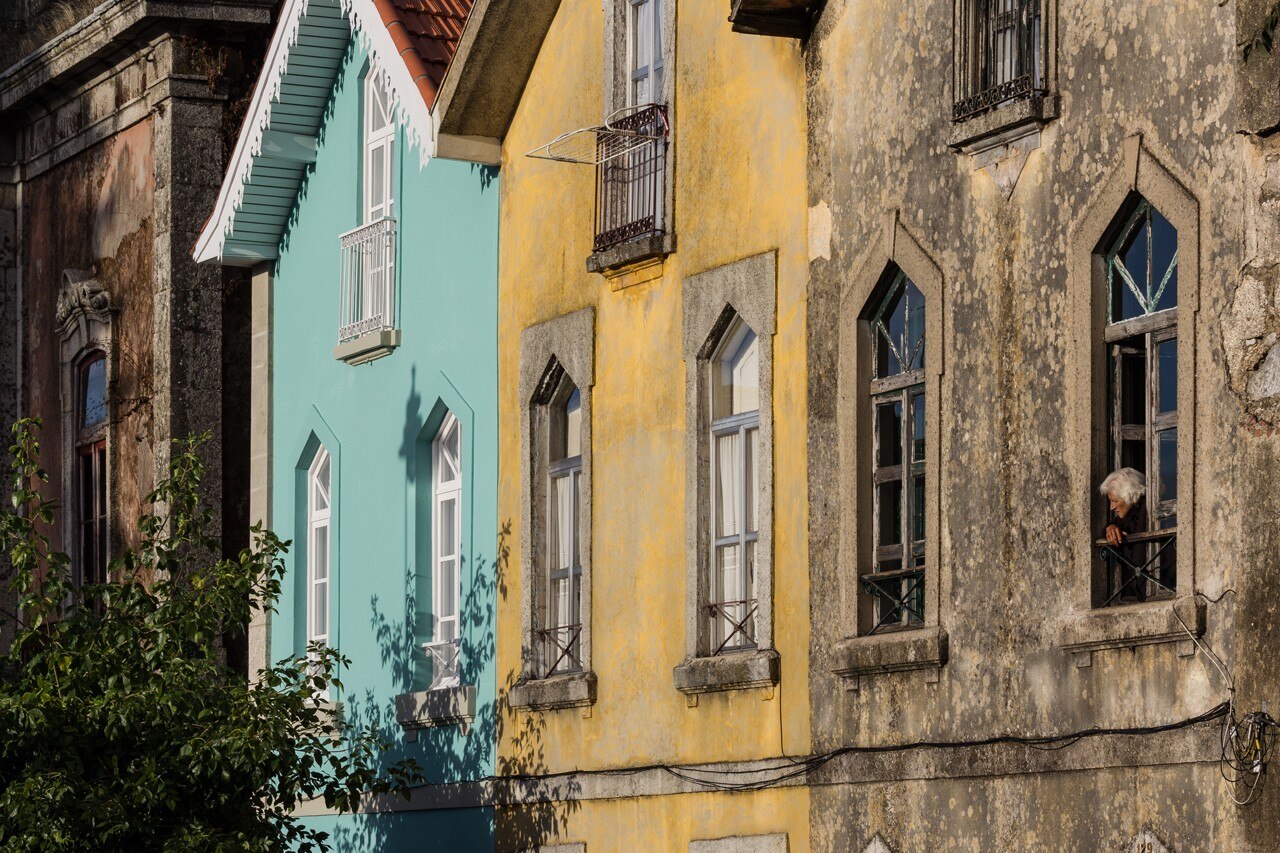
Three Cusps Chalet, Sé, Braga, Portugal
Program: house and studio
Architect: Tiago Do Vale Architects
Construction: Constantino & Costa
Site area: 60 sqm
Construction area: 165 sqm
Completion: 2013


